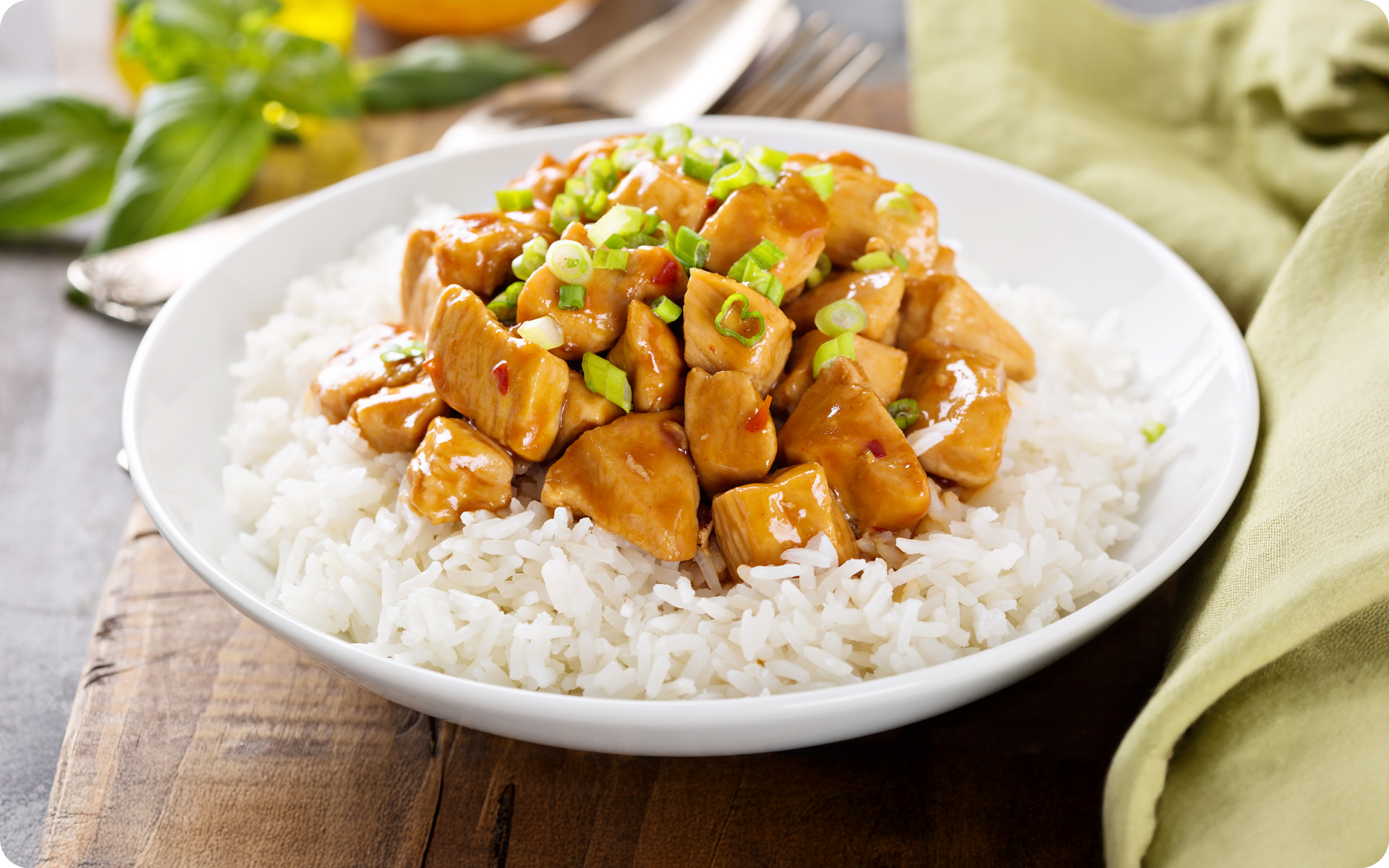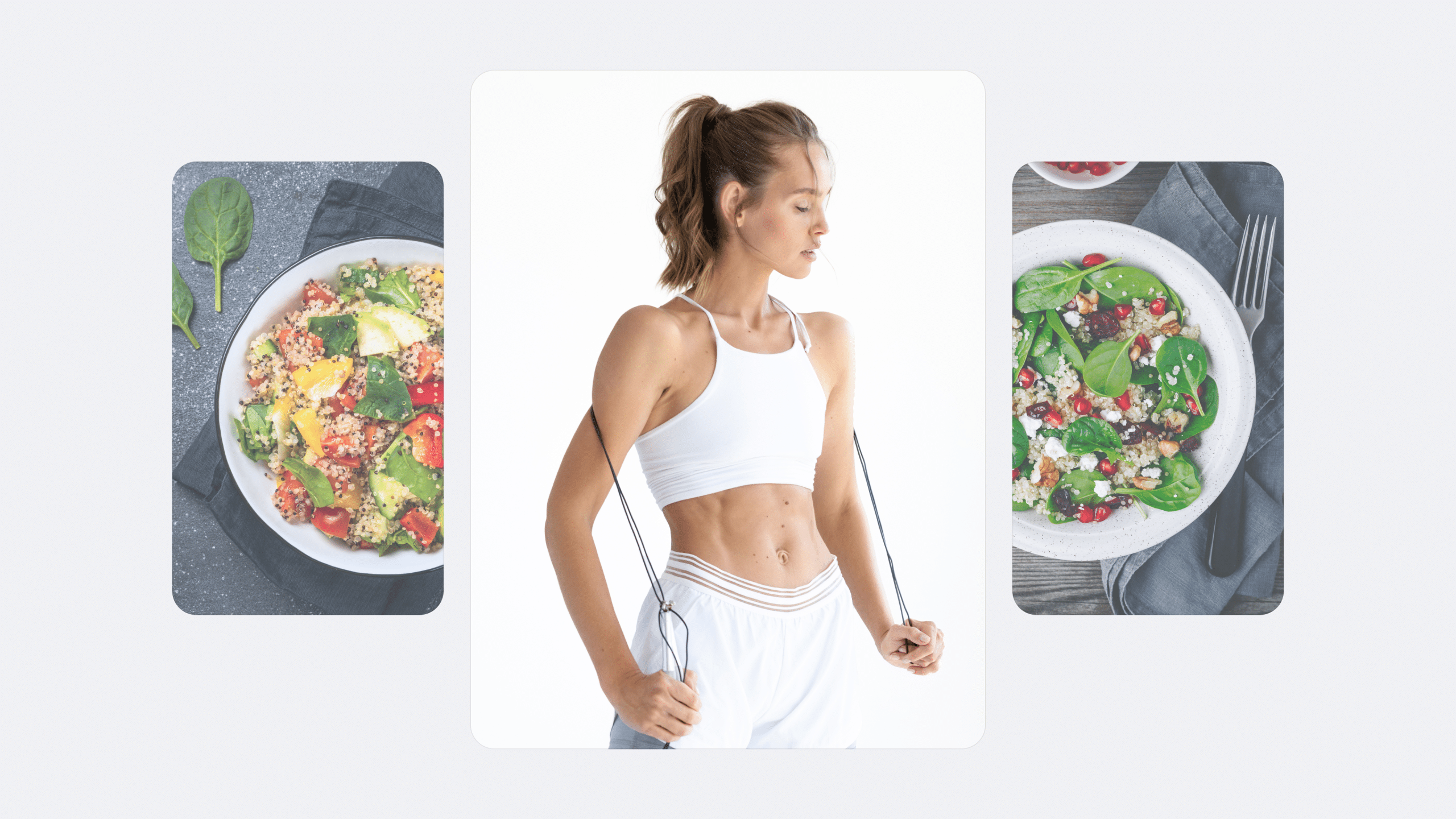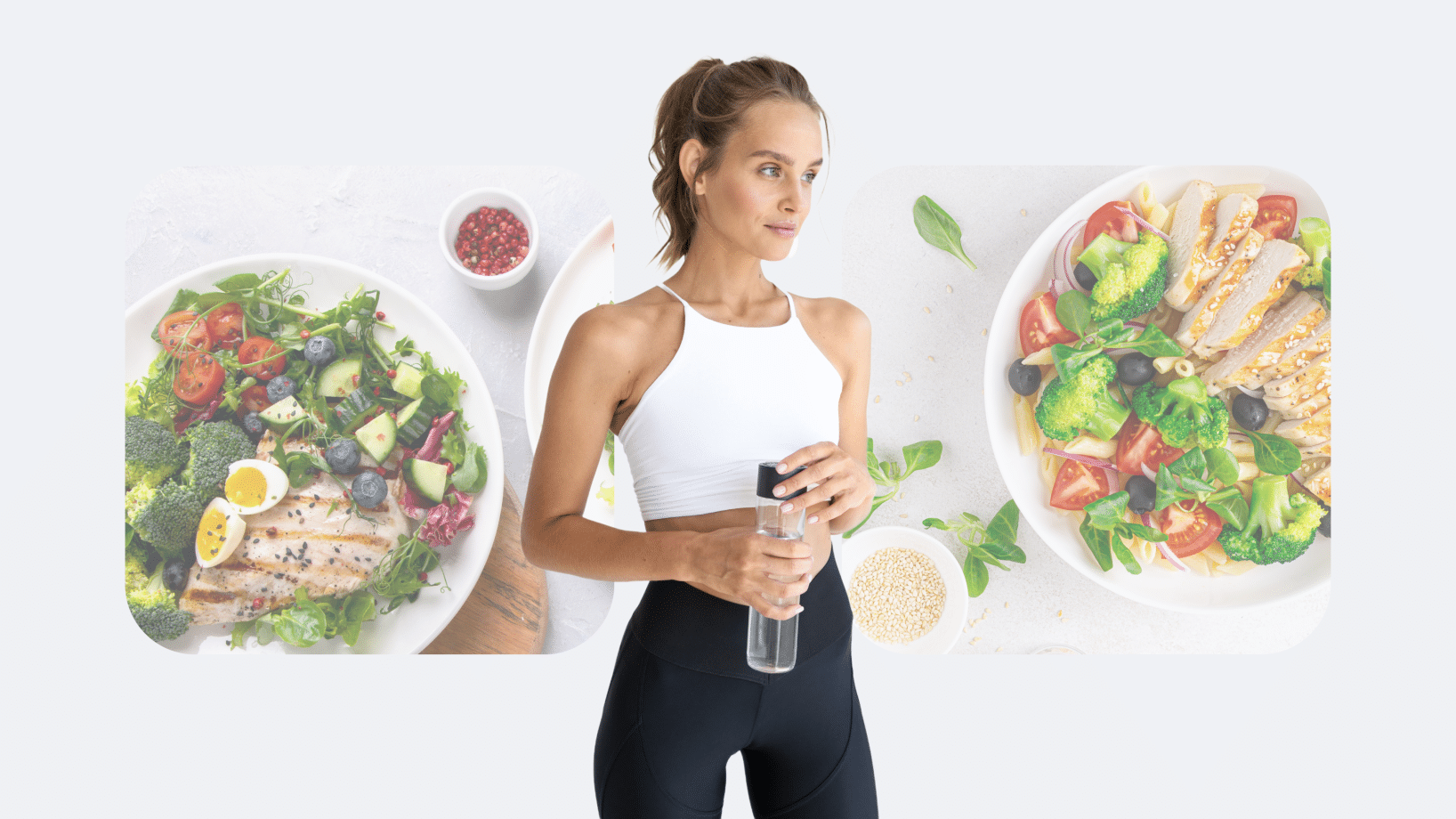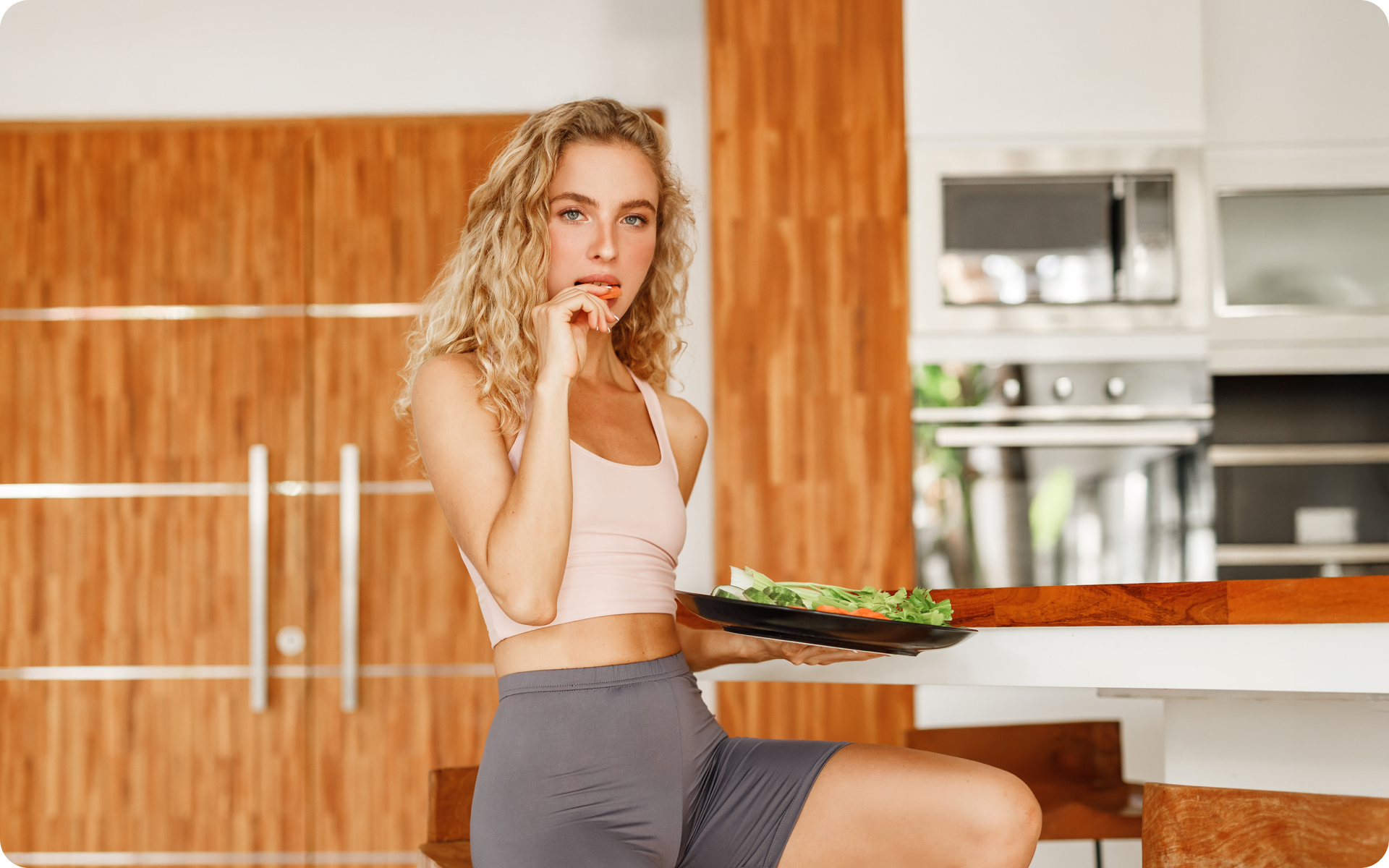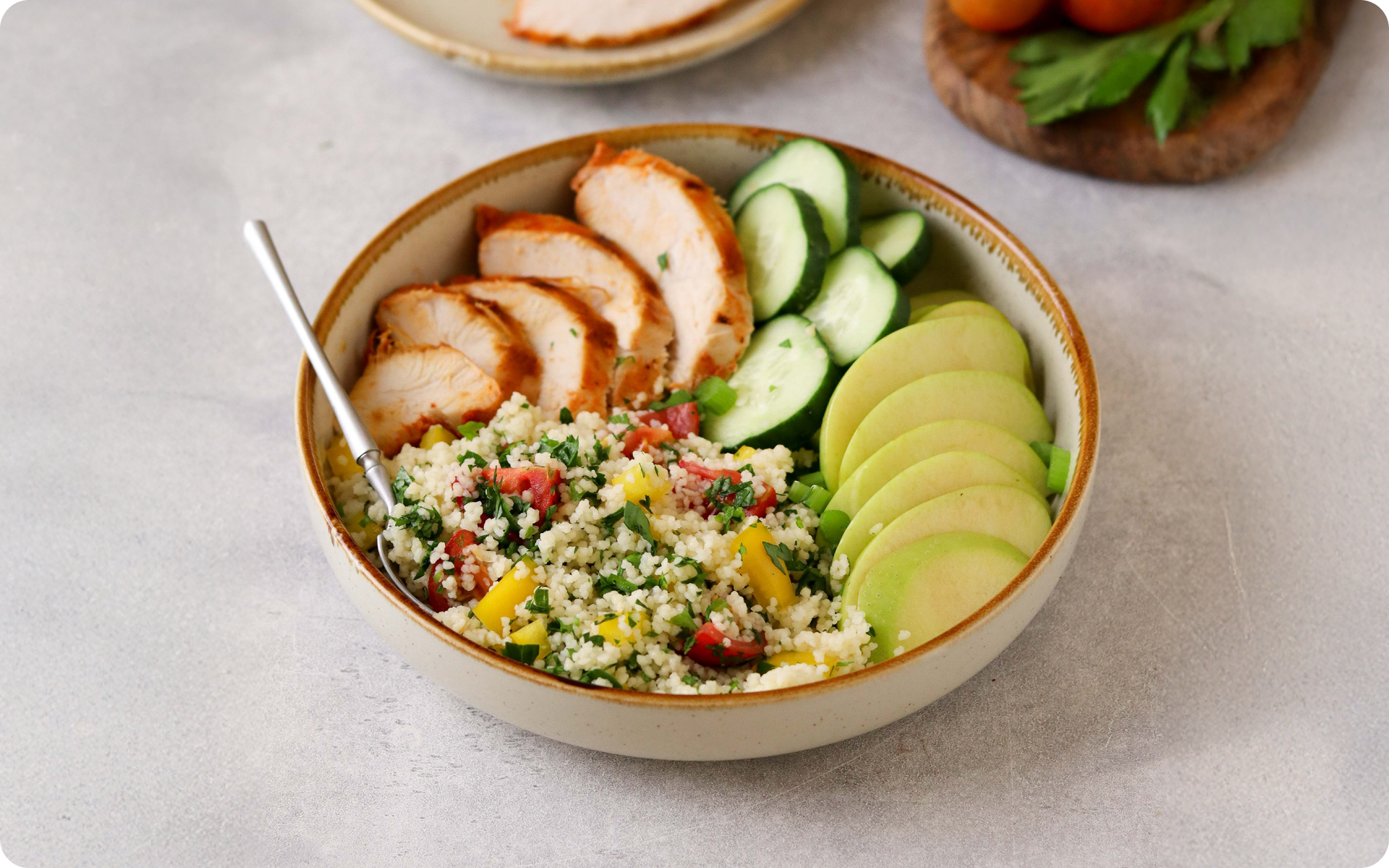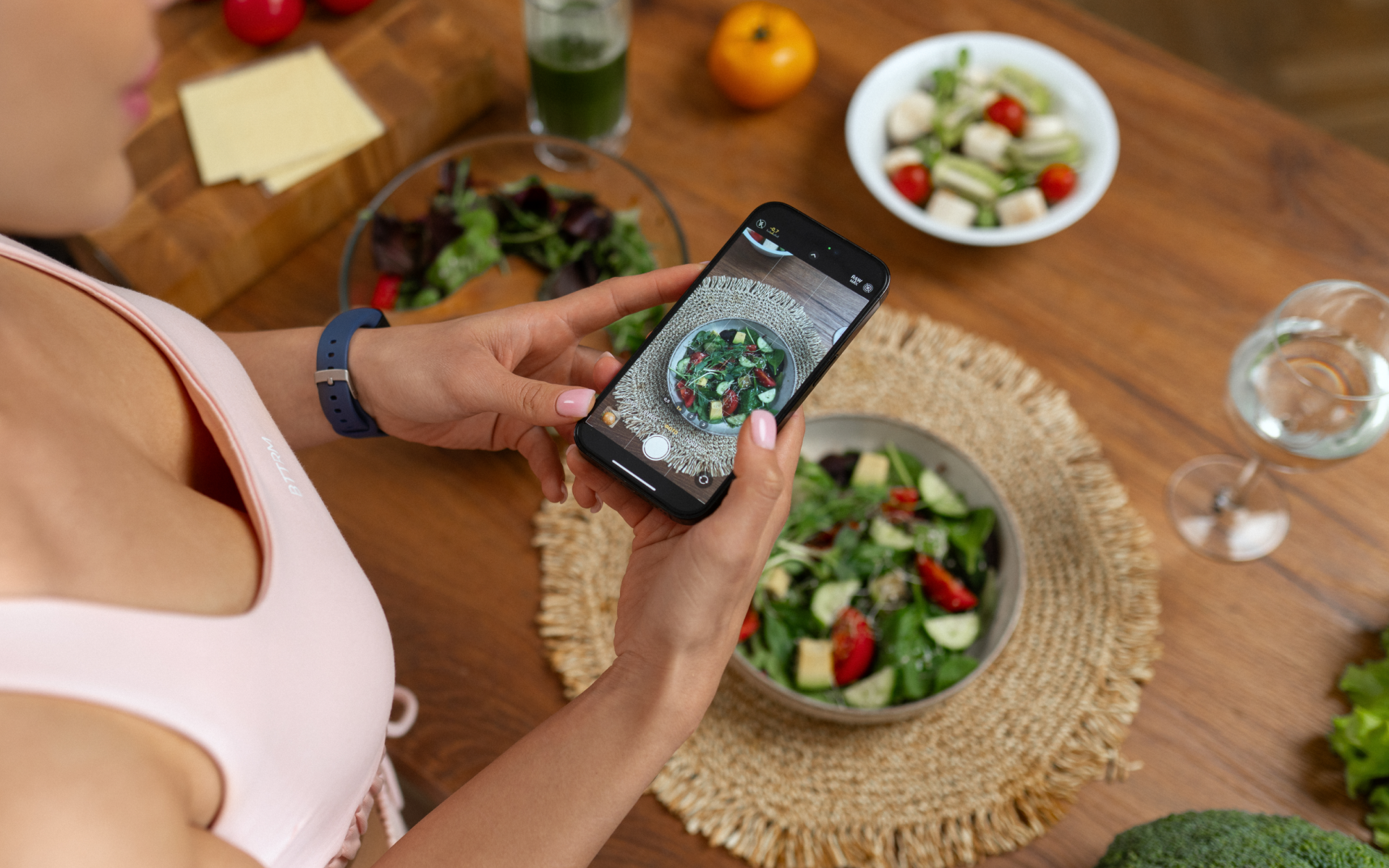Chinese takeout is one of many people’s favorite foods. It’s spicy, nutritious, and filled with vegetables, noodles, and delicious meat for meat-eaters. But have you ever thought about the calories in that sweet and sour chicken?
Don’t get me wrong, I don’t want you to obsess over every meal you eat in terms of calories and nutrients. If you want to try to get used to choosing healthier meals, you just need to put a little bit of thought into it.
Healthy eating doesn’t mean you must say no to takeout food and only eat steamed broccoli and chicken. You can enjoy all kinds of meals. It’s just important to be informed about their nutritional value.
In this guide, we’ll talk about the best and worst foods to order from Chinese restaurants. Some meals may be filled with salt, sugar, and oil, and can be highly processed, which many of us try to limit for fitness and longevity (11).
How Many Calories in a Typical Chinese Takeaway?
A typical Chinese meal can contain anything from 1,500 to 2,000 calories, depending on the dishes you choose, the portion size, and how the food is cooked.
According to the US Department of Agriculture, an average healthy person should eat approximately 2,000 calories a day (10). A single large Chinese meal may end up filling the entire daily recommendation if you don’t choose your meal wisely.
The amount of calories you consume from Chinese food is dependent on the appetizers, entrees, and portion sizes you choose.
Lean and toned up body isn’t just a far-fetched fantasy. Check out the BetterMe app and watch it propel your weight loss journey into high gear!
A typical Chinese entree contains the following amounts of calories:
And that’s only the entrees!
When choosing entrees, many people opt for Tso’s chicken and rice. It comes with sauce, white rice, and fried chicken. Such an option can add 1,600 more calories to your meal (3).
If you ate all of the above for one meal, that would be 3,400 calories, which is 1,400 kcal more than the recommended daily intake.
Does this mean Chinese food is taboo? Of course not.
Let’s take a look at the best and worst foods from this very special and delicious cuisine.
The Worst Chinese Takeout Foods for Your Health
We’ve established that egg rolls, fried rice, and Tso’s chicken shouldn’t be the go-to meals for a person who wants to take care of their body, at least not all at once.
But what else is there?
Here are some options you should save for special occasions (2):
- Crab Rangoon
Crab meat is rich in protein, so what’s wrong with that? Crab rangoon is an appetizer that contains relatively little meat. However, there’s lots of cream cheese and dough, and it’s deep-fried. You’ll usually get four bites per serving, but this may contribute half the calories you should eat in a meal. - Barbecue Ribs
There’s no hidden fat or calories in this dish — you can see all of it on the surface. The ribs are coated with sauce, and sauces in general are often calorie- and fat-rich. This option contains 64 g of fat and approximately 1.5 times more sodium than the daily recommended intake. - Lo Mein
An order of lo mein can contain as much as 50% of the carbs you should eat in a day. It’s essentially a giant pile of noodles made from white flour that can make your blood sugar rise faster than the healthier whole grains that contain more fiber (4). Not to mention all the oil and soy sauce used to prepare the dish, which is essentially a fat and sodium bomb.
Basically, all Chinese cuisine that contains heavy sauces or involves frying shouldn’t be your first option. These sauces contain lots of sugar, sodium, and fats, although they may seem super delicious. If you can, you should order vegetarian versions of the dishes, ask for sauces on the side if possible, and not eat the whole portion.
Read more: Kimchi: Calories, Nutrition, and Health Benefits
What Is the Healthiest Chinese Food to Order?
Here are some options to choose from (2):
- Vegetable Dumplings
Steamed (not fried) vegetable dumplings are an excellent choice for those who want to have more greens in their meals. By using a chili sauce instead of soy sauce, you’ll also consume less sodium.
Are you wondering what Chinese food is the lowest in calories? Steamed vegetable dumplings with a sauce on the side are close to perfection. 100 g contains approximately 144 calories (12). - Soups
Wonton soup, egg drop, and other soups are fine unless there’s lots of fat on top of them or they’re served with fatty toppings you just love to finish. A cup of a hot, delicious soup contains approximately 100 calories (8), which isn’t a lot. - Stir-Fries
Protein and vegetables are great options for a meal. Whether it’s shrimp and greens or chicken and broccoli, it’s a good, healthy, nutritious choice. A cup of chicken-broccoli stir fry is approximately 145 kcal (7).
However, you should beware of the sauces. Many stir fries contain lots of oil and heavy sauce. Ask the kitchen to give you all of that on the side so you can control the amount of fat and sodium you consume.
- Kung Pao Chicken
For those who like spicy food but don’t want to over-sauce their meals, kung pao chicken is a fantastic alternative. Chili peppers, chicken, and lots of vegetables. Order a smaller portion and add some brown rice, and you’ll be able to limit the meal to around 600 kcal. - Buddha’s Delight
This dish is as good as it sounds. It contains mushrooms, cabbage, carrots, lots of other vegetables, and nuts. It provides you with protein, healthy fats, and fiber. There’s a variety that includes tofu if you want to get more protein-wise. It’s usually stir-fried and comes with sauces, but you can get a steamed version with sauces on the side for more control over how many calories you consume. - Chop Suey
Chop suey is a Chinese-American dish with a focus on vegetables. In this dish, you’ll find water chestnuts, cabbage, bean sprouts, and other healthy vegetables, in addition to meat, rice, and/or fried noodles. If you choose an option with brown rice and shrimp or chicken, you’ll get it all: carbs, protein, fiber, fats, and micronutrients.
A cup of chop suey contains approximately 241 kcal and 15 g of protein (1). There are many versions too, so you can substitute meat with tofu if you’re looking for vegetarian/vegan options.
It is a good idea to ask for sauces on the side and choose lighter steamed versions of meals with lots of vegetables.
Looking for a way to break the vicious cycle of weight loss and tone up all the jiggly parts? Watch the extra pounds fly off and your muscles firm up with the BetterMe app!
FAQs
Is Chinese food high in calories?
Chinese food is quite high in calories, particularly dishes that are deep-fried or made with heavy sauces (6).
For example, orange chicken is a dish that is commonly found in Chinese restaurants that’s made by coating chicken pieces in batter and deep-frying them. This dish is also served with a thick orange-flavored sauce that contains a lot of sugar, cornstarch, and oils. It can easily exceed 1,000 calories in a single serving.
Let’s take another popular dish, General Tso’s chicken. Similar to orange chicken, this dish is deep-fried and served with a sweet and spicy sauce. A single serving of this dish can contain up to 1,300 calories.
Even some seemingly healthy Chinese dishes such as vegetable stir-fry or steamed dim sum can be high in calories. This is because they often contain added oils and sauces to enhance the flavor.
In addition, many Chinese restaurants serve quite large portions, which can contribute to an increased calorie intake.
You’re likely to find an all-you-can-eat buffet at many Chinese restaurants, which can be tempting, but this can also lead to overeating and consuming excessive calories.
Is Chinese food OK for weight loss?
Chinese food can be a part of a weight loss diet, but it’s important to make the right choices (9). Meals such as steamed vegetables and protein, clear soups, and stir-fries with little to no added oil or sauces are excellent options for those who are looking to lose weight.
Some tips to make your Chinese food meal less calorific include:
- Choosing steamed or boiled dishes rather than deep-fried ones
- Asking for sauces on the side so you can control the amount you use
- Filling up on vegetables and choosing protein options such as lean meats or tofu
- Limiting the amount of rice or noodles you consume
- Avoiding sugary drinks and opting for water or unsweetened tea instead.
Our guide to Chinese Herbs for Weight Loss has some more tips on how you can make healthy choices when preparing your meals.
How healthy is the Chinese diet?
Traditional Chinese meals consist of a variety of vegetables, lean proteins, and small amounts of grains such as rice or noodles. These meals are typically well-balanced and can be healthy if they’re prepared with minimal added oils, sauces, and sugars.
However, in modern times, Chinese cuisine has been adapted to cater to Western tastes by adding more deep-fried dishes and heavy sauces. These foods are not only calorie-dense, they’re also high in unhealthy fats and sugars.
Ingredients such as MSG, which is used to enhance flavor in some Chinese dishes, may also have negative health effects if consumed regularly.
Therefore, the healthiness of a Chinese diet is dependent on individual food choices and portion control.
Is Chinese food carb-heavy?
Chinese fast food dishes such as fried rice and chow mein are typically high in carbs due to their use of rice and noodles. Even the protein in these dishes is often coated in batter, which makes it a double carb load, not to mention the use of sauces that are high in sugar and cornstarch to thicken them.
However, as previously mentioned, traditional Chinese meals typically consist of a variety of vegetables, lean proteins, and small amounts of grains (9). These meals are not carb-heavy if prepared with minimal added oils and sauces.
Find out how to make low-carb meal swaps in our guide: Types of Rice
What Chinese food has the lowest calories?
Dishes such as steamed chicken with vegetables, steamed fish, and steamed tofu are some of the lowest-calorie options on a Chinese food menu (9). These meals are high in protein and nutrients, but low in unhealthy fats and sugars.
Other healthy options include stir-fries with lean proteins such as beef or chicken and lots of vegetables, in addition to clear soups such as hot and sour soup or wonton soup.
Check out this steamed dumplings recipe for a tasty and low-calorie Chinese food option.
The Bottom Line
Chinese food can make your daily calorie intake double. One meal can contain up to 3,400 calories, which is double the amount some people should eat in a day to maintain a healthy weight.
However, Chinese food lovers shouldn’t be discouraged. There are incredible healthy dishes that are no less tasty than fried chicken and rice. Opt for less deep-frying and more vegetables, and you’ll be able to eat a ton of top-notch meals from the best Chinese chefs.
Healthy eating isn’t about restrictions, it’s about finding the right foods that are delicious but filling and nutrient-rich. With practice and knowledge, you’ll create a diet plan that includes all your favorite foods and will help you reach your personal goals.
If you’re struggling, BetterMe has great meal plans for you!
DISCLAIMER:
This article is intended for general informational purposes only and does not serve to address individual circumstances. It is not a substitute for professional advice or help and should not be relied on for making any kind of decision-making. Any action taken as a direct or indirect result of the information in this article is entirely at your own risk and is your sole responsibility.
BetterMe, its content staff, and its medical advisors accept no responsibility for inaccuracies, errors, misstatements, inconsistencies, or omissions and specifically disclaim any liability, loss or risk, personal, professional or otherwise, which may be incurred as a consequence, directly or indirectly, of the use and/or application of any content.
You should always seek the advice of your physician or other qualified health provider with any questions you may have regarding a medical condition or your specific situation. Never disregard professional medical advice or delay seeking it because of BetterMe content. If you suspect or think you may have a medical emergency, call your doctor.
SOURCES:
- AMERICAN CHOP SUEY (2019, fdc.nal.usda.gov)
- Best and Worst Chinese Dishes for Your Health (2022, webmd.com)
- CHINESE RESTAURANT FOOD (n.d., cspnet.org)
- Restaurant, Chinese, chicken and vegetables (2019, fdc.nal.usda.gov)
- Soup, egg drop, Chinese restaurant (2019, fdc.nal.usda.gov)
- U.S. Department of Agriculture: Dietary Guidelines (2005, cnpp.usda.gov)
- Ultra-Processed Diets Cause Excess Calorie Intake and Weight Gain: An Inpatient Randomized Controlled Trial of Ad Libitum Food Intake (2019, pubmed.ncbi.nlm.nih.gov)
- VEGETABLE DUMPLING, VEGETABLE (2019, fdc.nal.usda.gov)
